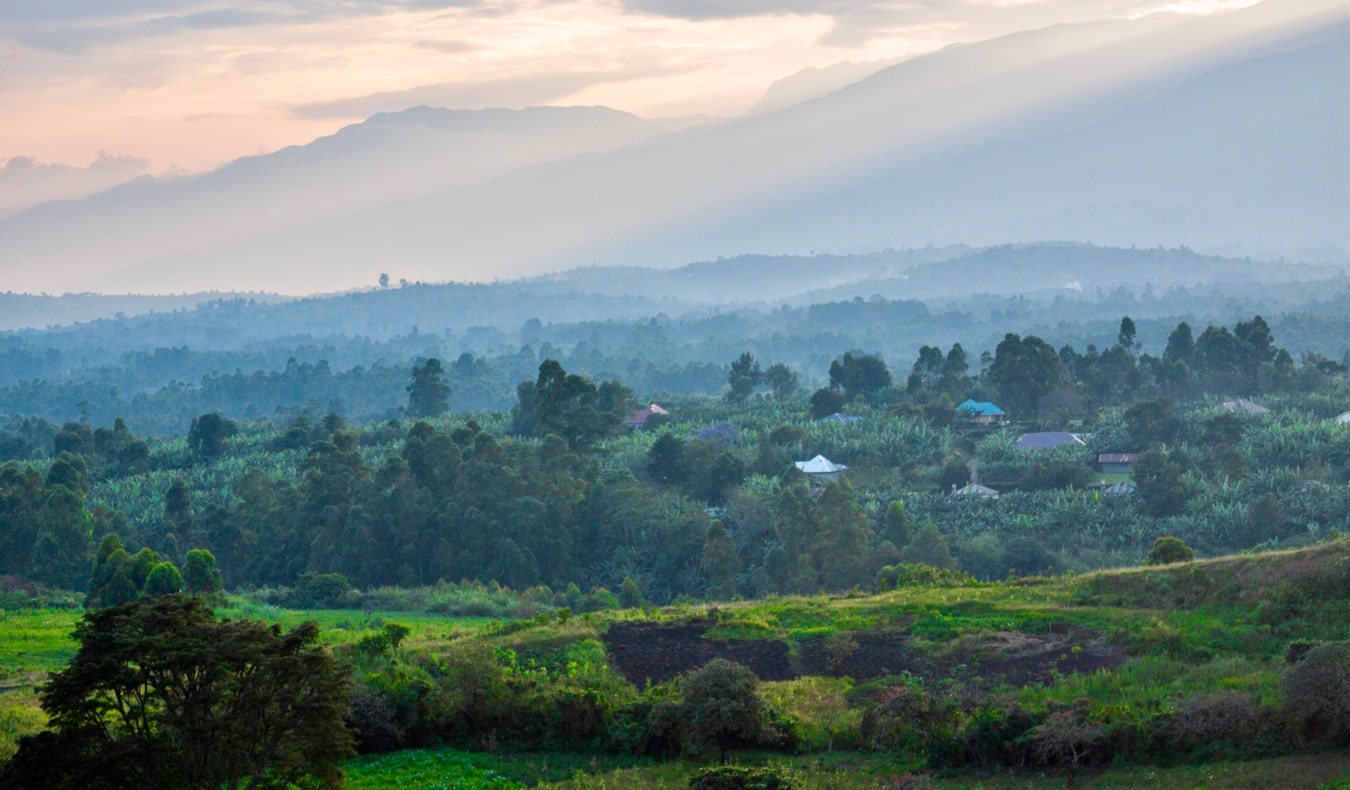
Today’s guest post is from Alicia Erickson. She’s a travel writer who splits her time primarily between East and Southern Africa, India, and Seattle. She’s writing about the way to economize in Uganda, a rustic I even have longed to go to but still haven’t gotten around to doing. Enter Alicia, who will give us tips and tricks to save lots of on our next visit.
The magnificent and diverse color, vegetation, and wildlife of Uganda so inspired Churchill that he nicknamed this East African country “the pearl of Africa,” a reputation that has stuck ever since.
Since shedding its violent reputation after a volatile period during the 1980s, Uganda has changed tons . especially , it’s invested resources into developing its wealth of national parks, largely aimed toward the repopulation of wildlife and therefore the conscious development of infrastructure to assist make its vast wilderness accessible.
Although East Africa is understood for its expensive high-end lodges and activities, Uganda is cheaper than a number of its neighbors. It spoils adventure-seekers with its bounteous nature. during a relatively compact and simply navigable area, one can trek with mountain gorillas in dense jungle, visit coffee and tea plantations, relax by volcanic lakes, drive through savannah abundant in tree-climbing lions and other wildlife, hike snow-capped mountains, and raft down rapids within the Nile River!
Uganda has enthralled me since I first started visiting in 2010 and, over numerous visits, I’ve only developed a deeper appreciation for it. during this post, i would like to share that love for the country and assist you travel Uganda on a budget!
How to economize on Transportation
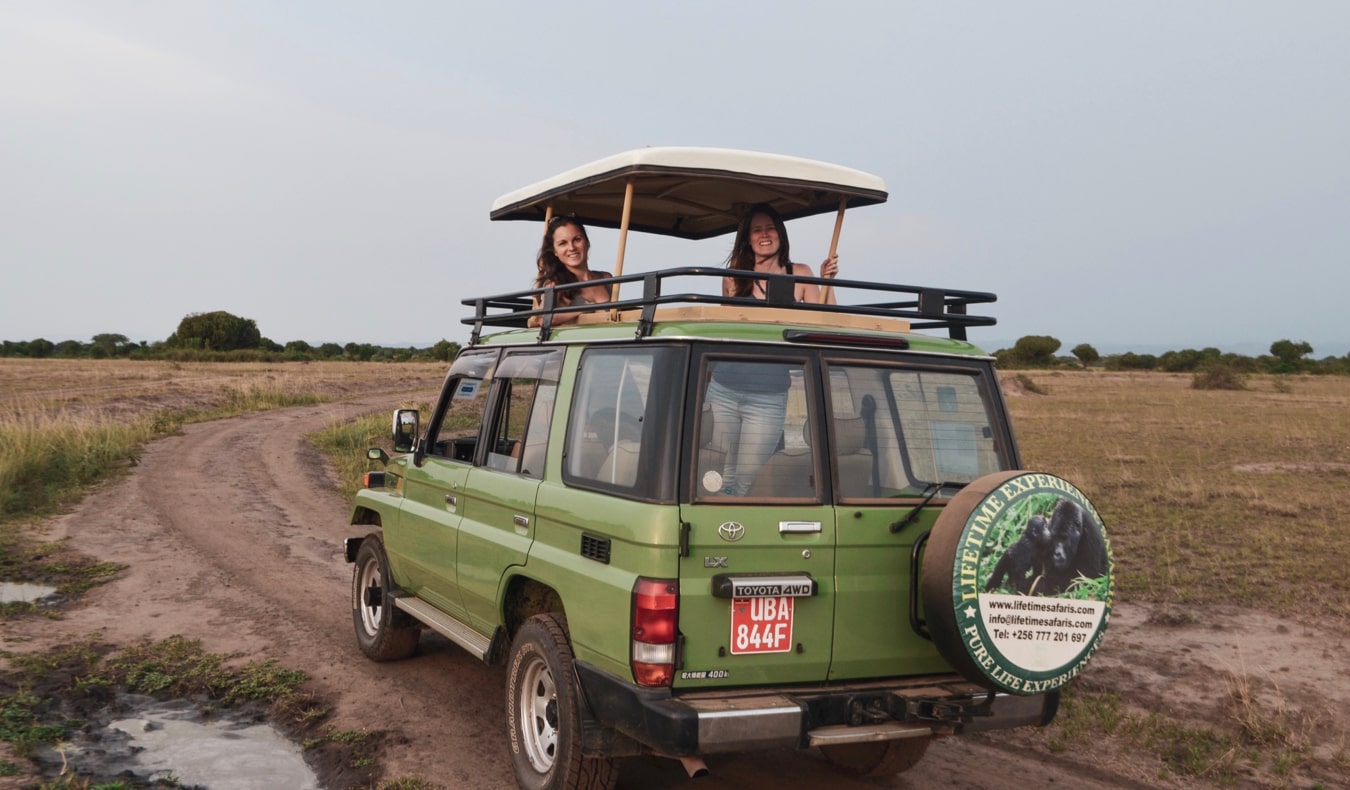
Two female travelers on safari in Uganda standing during a jeep
Transportation in Uganda comes during a wide selection of public and personal options that cater to a spread of budgets. Public buses and motorbikes are the most cost effective and most direct ways to urge to major destinations, though trying to find deals on private transportation will improve your flexibility and simple travel.
Boda Bodas (motorbikes) – Public motorbikes, referred to as boda bodas, are cheap in areas like Jinja and Kampala but are harder to seek out in rural areas and around national parks. While they're the foremost cost-effective sort of transportation — between 7,000-8,000 Ugandan shillings (UGX) ($2 USD), though prices are always negotiable — exercise caution when using boda bodas, as they need a reputation for being quite dangerous: helmets aren’t provided, and drivers are known for being reckless.
However, Safe Boda and Uber, which connect passengers with drivers through their respective apps, have recently come to Kampala and supply far more reliable drivers and standardized pricing, with minimum fares starting at 5,000 UGX ($1.35 USD).
Matatus (local buses) – Local minibuses, referred to as matatus, are a cheap — though not altogether easy — thanks to get around Kampala. Matatus also run between different regions in Uganda, often without a group schedule, and leave once the bus has filled up.
Prices depend upon route, though they're generally around 1,000 UGX ($0.25 USD). To catch one, just wave down one among these rundown white vans from the side of the road — but be warned that they're usually cramped and filled beyond capacity.
Taxis – Taxis are the foremost expensive thanks to get around cities, though also the safest. Prices are always negotiable, though expect to pay between 10,000 and 40,000 UGX ($2.75–11 USD) for a ride, counting on distance and time of day.
Coach Buses – Coach buses, travel by variety of companies, are wont to travel long distances within Uganda also on other East African destinations, like Mombasa and Kigali. Costs are hooked in to the route but generally frolic 50,000 UGX ($13.50 USD) for a ten-hour journey.
Private Car
Renting a car is a perfect thanks to independently explore Uganda and go deeper into a number of the parks where public transportation doesn't go. Cars are often hired with or without a driver, also like or without camping equipment.
Although not necessary, a driver are often handy not only in navigating potholed roads but also by providing a wealth of historical and cultural insights and in spotting wildlife on safari. A reliable company I even have used is Lifetime Safaris, which offered a car with a driver starting at $80 USD/day.
How to economize on Accommodation
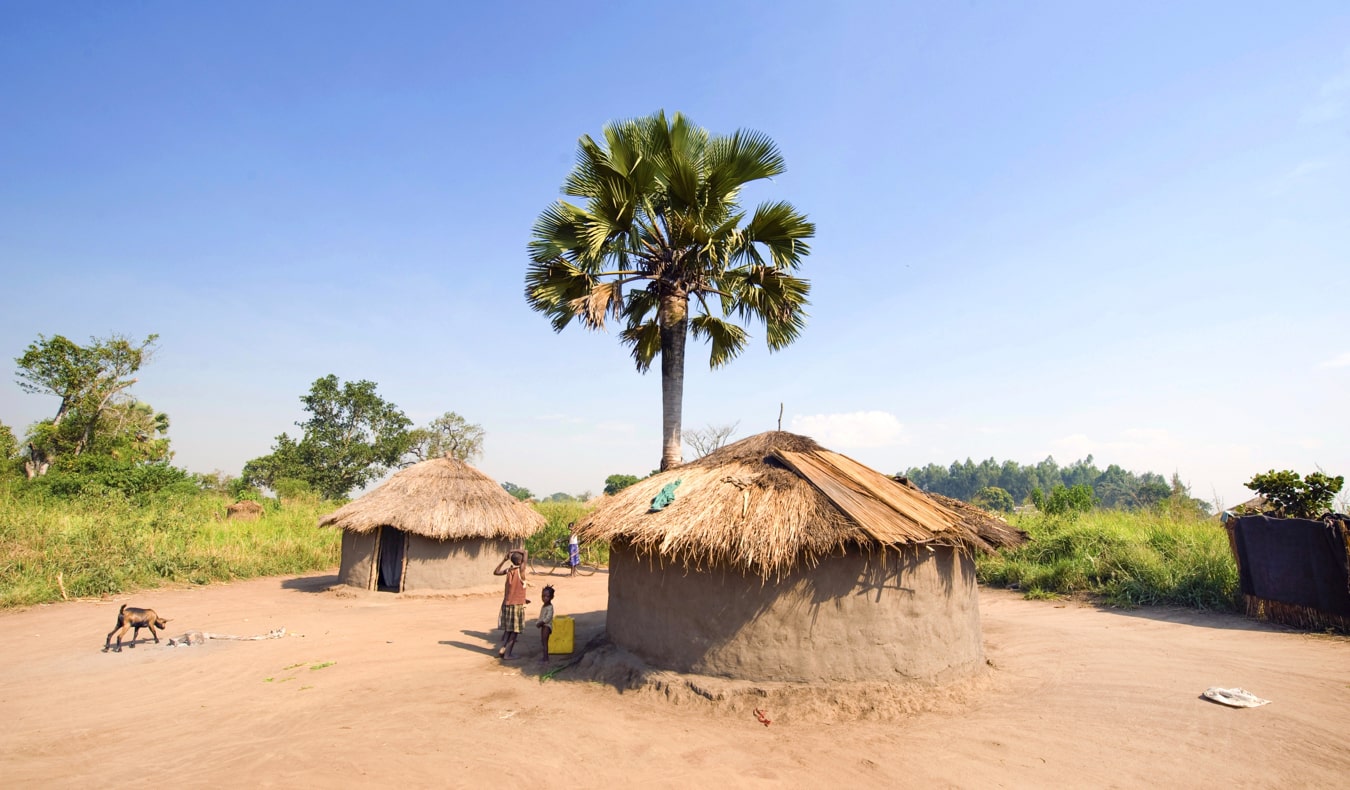
A small traditional hut during a village in Uganda
Uganda’s major attractions and national parks don’t only offer high-end accommodation but also camping and low-budget hostels and guesthouses for budget travelers.
Hostels – There are only a couple of hostels in Uganda, mostly in Kampala. Red Chilli offers dorms at its property in Kampala for $12 USD/night, and Om Bunyonyi on Lake Bunyonyi in southwestern Uganda provides dorms for $15 USD/night.
Guesthouses – Guesthouses can vary widely in cost. A decent-quality one with relatively reliable facilities in touristic areas, like Om Bunyonyi, runs around $25 USD/night for a double private room, though expect prices to be much higher around national parks. If you don’t book beforehand and are stopping through alittle town for the night, you'll easily find very simple guesthouses for much less, approximately $10 USD/night. Water and electricity will often be unreliable during this sort of accommodation, however.
Camping – Camping may be a great option within the regions surrounding the national parks, like Murchison Falls and Queen Elizabeth, though prices will vary by location. At its site in Murchison Falls, Red Chilli offers camping for $8 USD/night. Other sites and lodges offer camping for $5–10 USD/night. Many places offer tents for rent, though bringing your own equipment will prevent even extra money .
Eco-lodges – Budget-consciousness is perhaps not what you've got in mind once you think “eco-lodge,” given the trend toward fancy eco-friendly safari lodges in East Africa . However, lodges and safari camps are a prominent sort of accommodation within the national parks, and not all of them need to break the bank! There are some affordable ones that also are often a pleasant splurge on a budget holiday. they will cost around $100 USD per night and typically include three meals each day also , reducing other daily costs.
How to economize on Food and Drinks

Eating at local restaurants and buying fresh produce and snacks from markets will prevent a big amount of cash than eating at Western-style eateries, which are primarily concentrated in Kampala.
Restaurants – Kampala has an in depth international restaurant scene. they're expensive as compared to local restaurants, though cheaper than eating call at Europe or North America and cheaper also than similar restaurants in other major East African cities. Costs range from 30,000 to 50,000 UGX ($8–15 USD) for a mean meal.
Local cuisine, in contrast, is fairly simple — consisting largely of potatoes, rice, beans, cabbage, chapati (unleavened flatbread), and ugali (maize flour porridge) — and far cheaper . There are many Ethiopian restaurants also , offering more mid-range meals.
Food-on-the-go – Uganda features a few street food items, the foremost famous being an egg and chapati wrap referred to as a “rolex,” which may even have different vegetables added and price as little as 1,500–3,000 UGX ($0.40–0.80 USD). refill on fresh tropical fruit, which is abundant in markets and along the road; the worth is usually up for negotiation.
Inexpensive roadside food and snack stands selling corn, samosas, nuts, and grilled meat also are prevalent and convenient on long trips. Eating in these ways can save significant costs in Uganda.
Drinks – Foreign-import wine and spirits are often found in Kampala, though cocktails and wine are costly within the capital city’s posh bars, restaurants, and clubs. Your best bet is to stay with local beers like Nile, which should cost 3,000–5,000 UGX ($0.80–1.35 USD), counting on the venue you purchase it from. Or try Uganda’s local gin, called Waragi, at around 1,000 UGX ($0.25 USD) a pour. This potent liquor becomes more tolerable when mixed with an honest dose of tonic and lime.
Adventure Activities Costs
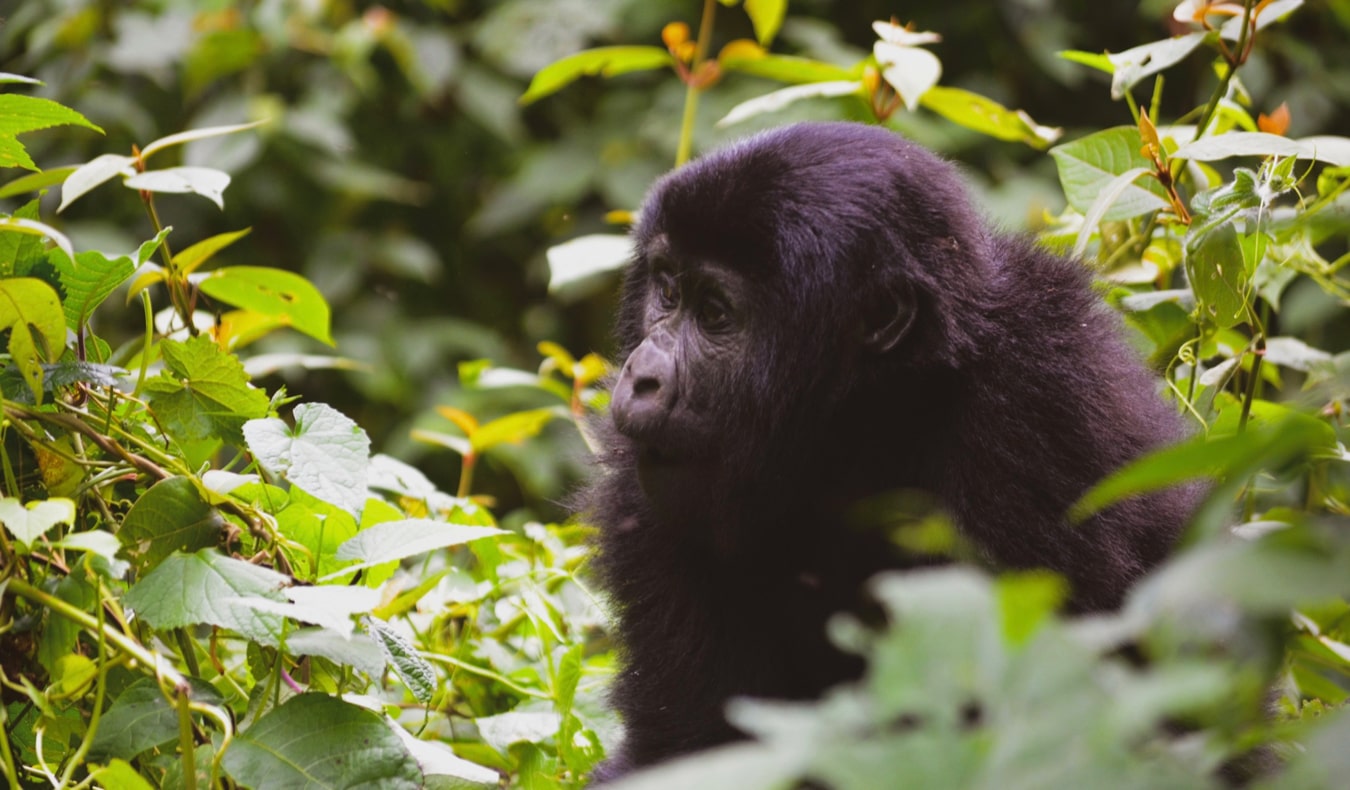
A young baby gorilla within the jungles of Uganda
Despite all the money-saving suggestions above, your budget are going to be highly hooked in to what percentage wildlife and adventure activities you would like to partake in. presumably you’ll want to try to to a few of the higher-cost attractions, like whitewater rafting down the Nile, checking out tree-climbing lions in Queen Elizabeth park , or trekking with mountain gorillas in Bwindi National Forest.
However, it's easy to intersperse those activities with low-cost days of relaxing by crater lakes, taking self-guided walks within the mountainous areas of southwestern Uganda, or volunteering. On those days, you'll spend $30 USD/day or maybe less!
Here are some typical adventure-activity costs:
Queen Elizabeth National Park: $40 USD/day for admission
Murchison Falls: $40 USD/day for admission
Rafting: $140 USD/per person for 5-6 hours
Chimpanzee tracking in Kibale: $100 USD/permit
Gorilla trekking in Bwindi: $600 USD/permit (increasing to $700 USD in July 2020)
Other Tips for Saving Money in Uganda
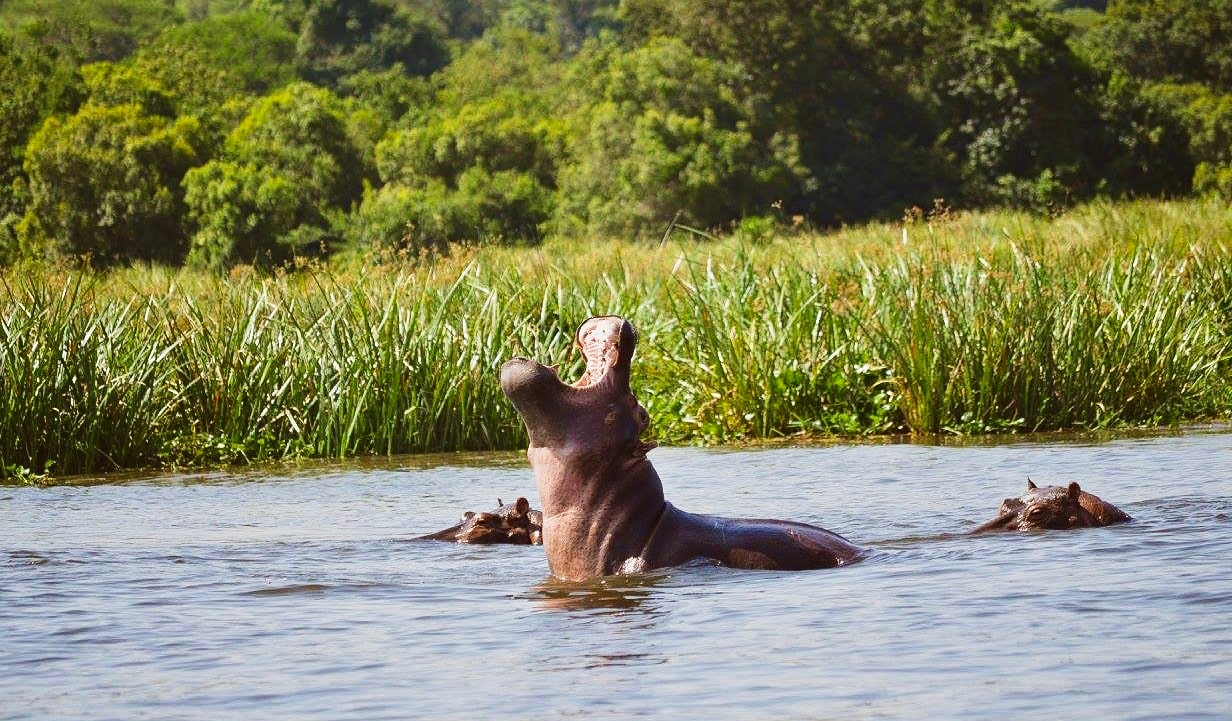
Beside the above, here are another general tips for cutting your costs on your visit:
Explore beyond the high-priced attractions – Regions outside of the main attractions are still abundant in nature and are often more captivating, as there are few to no tourists. Think volcanic lakes, little-known mountains, rarely visited waterfalls, almost-deserted islands, and dense forests and occasional and tea plantations.
Travel during the off-season – Don’t let the season scare you off! Uganda is at its most lush during the rainy months (March to May and October to November), crowds are at a minimum, and permits and lodging are often discounted to encourage tourism.
Travel off the beaten path – inspect Lake Bunyonyi, the Ssese Islands in Lake Victoria , and Sipi Falls, for instance . If you’re looking to try to to trekking within the region, the Rwenzoris are worth considering — while they aren’t “cheap,” they're a way cheaper option than Mt. Kilimanjaro and you'll do shorter or longer treks counting on some time and budget.
Consider volunteering – Avoid volunteer programs that charge money, but consider looking into opportunities like those on Workaway, which can help economize on accommodation and offer a more in-depth cultural experience. Grassroots Volunteering is another great resource.
Booking advice – Booking gorilla and trekking permits beforehand is advisable to make sure an area , since permits are limited, but skip booking package safaris, as tour company costs are much above if one travels independently.
Stay for a extended time – This might initially sound counterintuitive, but a extended stay means you won’t necessarily only be concentrating on the main tourist attractions. You’ll even have a far better idea of the way to navigate local transportation and become better familiar with a number of the regional cultures and smaller, underrated rural areas.
Bring a reusable bottle – to make sure your water is clean and safe (and to avoid pocket money on single-use plastic) bring a reusable bottle and a filter. LifeStraw makes a bottle with a built-in filter that ensures your water is safe and clean — regardless of where within the world you're.



0 Comments